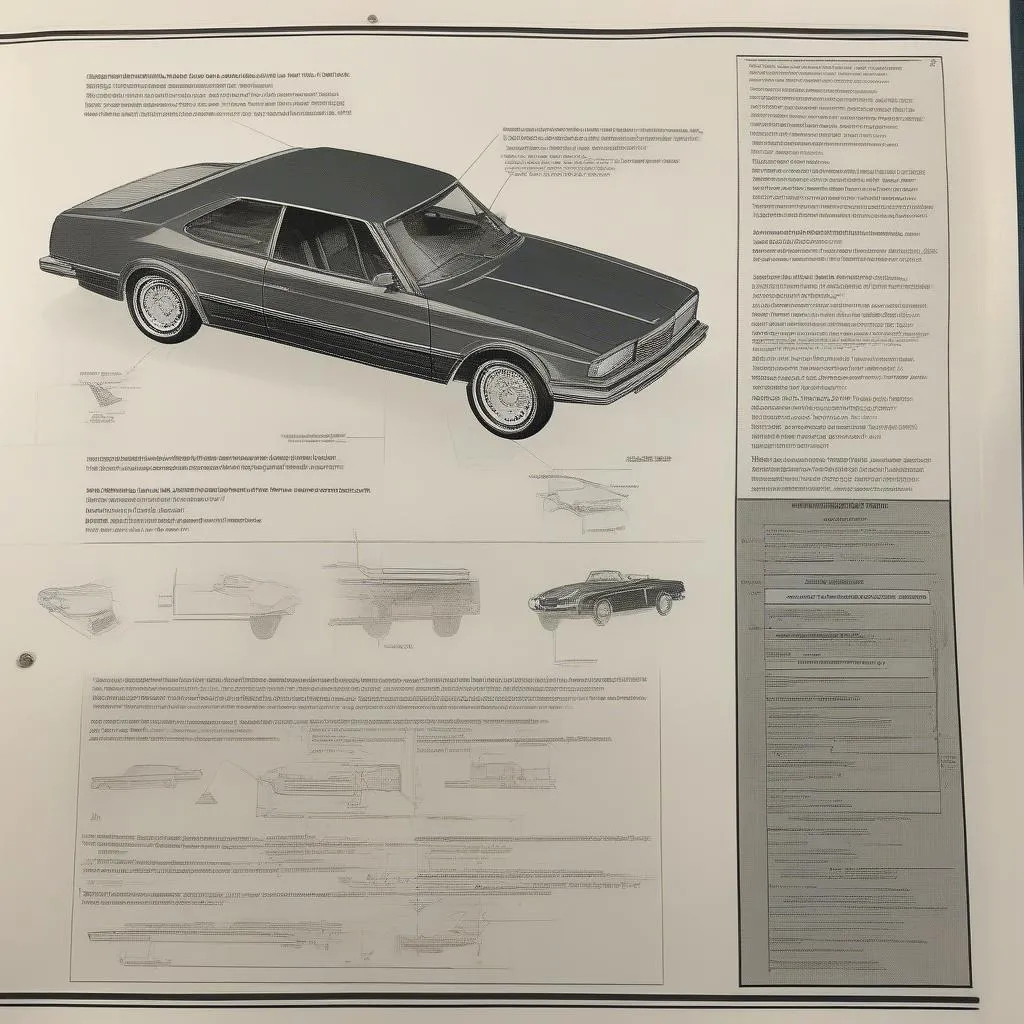Have you ever excitedly opened a brand new model car kit, only to be met with a set of instructions that seem more like ancient hieroglyphics than a helpful guide? Don’t worry, we’ve all been there! Model Car Instructions can sometimes feel like their own language, but understanding them is key to successfully building your dream miniature vehicle.
Let’s dive in and demystify the world of model car instructions, transforming you from a confused builder into a confident model car enthusiast.
What Makes Understanding Model Car Instructions So Important?
Whether you’re a seasoned model builder or just starting out, the importance of understanding model car instructions cannot be overstated. Here’s why:
The Blueprint to Your Masterpiece
Think of model car instructions as the blueprint to your miniature masterpiece. They provide a step-by-step roadmap, guiding you through every stage of the assembly process. Ignoring them is like trying to build a house without a foundation – chaos and frustration are almost guaranteed!
Avoiding Costly Mistakes
Misinterpreting a single instruction can lead to parts being assembled incorrectly, glue in the wrong places, or even damaged components. This can be disheartening, time-consuming, and in some cases, require you to purchase replacement parts.
Unlocking the Full Potential of Your Model
A well-understood set of instructions empowers you to build a model that accurately reflects the real-life vehicle. You’ll be able to appreciate the fine details, intricate parts, and overall craftsmanship that goes into creating a stunning miniature replica.
Decoding the Language of Model Car Instructions
Model car instructions often utilize a universal language of diagrams, symbols, and abbreviations to convey information concisely. Let’s break down some common elements you’ll encounter:
Diagrams: Your Visual Guide
Diagrams are the backbone of model car instructions. They provide a visual representation of each assembly step, showing you:
- Parts to be used: Diagrams clearly identify the specific parts required for each step, often accompanied by corresponding numbers or letters that match the parts list.
- Orientation: Arrows and other visual cues indicate the correct way to orient parts before assembly. This is crucial for ensuring the final model is put together accurately.
- Assembly Sequence: Diagrams illustrate the order in which parts should be connected, preventing you from gluing things together in the wrong order.
Symbols: A Universal Language
Symbols are used to communicate specific actions or techniques. Some common symbols include:
- Glue: Often represented by a droplet or a tube icon, this symbol tells you where adhesive is required.
- Cut: Scissors or a blade icon indicate parts that need trimming or cutting before assembly.
- Sand: This symbol, often resembling sandpaper, advises you to smooth out specific surfaces.
Abbreviations: Shortcuts for Clarity
To save space, model car instructions often use abbreviations. Some common examples include:
- R/L: Right/Left
- F/R: Front/Rear
- mm: millimeters
Familiarizing yourself with these common elements will make navigating model car instructions much easier.
Tips and Tricks for Successful Model Building
Here are some additional tips to help you become a model car building pro:
- Read Through the Instructions Fully Before Starting: This allows you to familiarize yourself with the steps involved and identify any potential challenges.
- Organize Your Workspace: A clean and organized workspace makes the building process much more enjoyable and efficient.
- Take Your Time: Model building is a hobby to be savored, not rushed. Take your time, pay attention to detail, and enjoy the process.
- Don’t Be Afraid to Ask for Help: Online forums, hobby shops, and even the model manufacturer’s customer service can provide valuable assistance if you get stuck.
Exploring Common Questions About Model Car Instructions
What if the Instructions Are in a Different Language?
Many model car kits are imported from other countries, and the instructions may not be in your native language. Don’t despair! Here are some solutions:
- Contact the Manufacturer: The model car manufacturer may have instructions available in your language on their website or can provide them upon request.
- Online Resources: Websites and forums dedicated to model building often have translated instructions or helpful guides for popular kits.
- Translation Apps: Smartphone apps like Google Translate can help you decipher key instructions.
My Kit is Missing Parts or Instructions, What Should I Do?
- Contact the Retailer: The first step is to contact the retailer where you purchased the kit. They may be able to provide replacement parts or instructions.
- Reach Out to the Manufacturer: Most manufacturers are happy to assist with missing or damaged components. Have your kit information (name, model number, etc.) ready when you contact them.
Ready to Build Your Dream Model?
Understanding model car instructions is the key to unlocking hours of enjoyable and rewarding model building. Remember, patience, attention to detail, and a willingness to learn are your best tools. So, gather your tools, choose your favorite kit, and embark on your next miniature masterpiece!
Need Help with Your Next Build?
We’re here to help! Contact us on Whatsapp at +84767531508 for expert assistance with your model car projects. Our team of experienced builders can provide guidance, tips, and support to help you achieve stunning results.
 model car instructions
model car instructions
Happy Building!